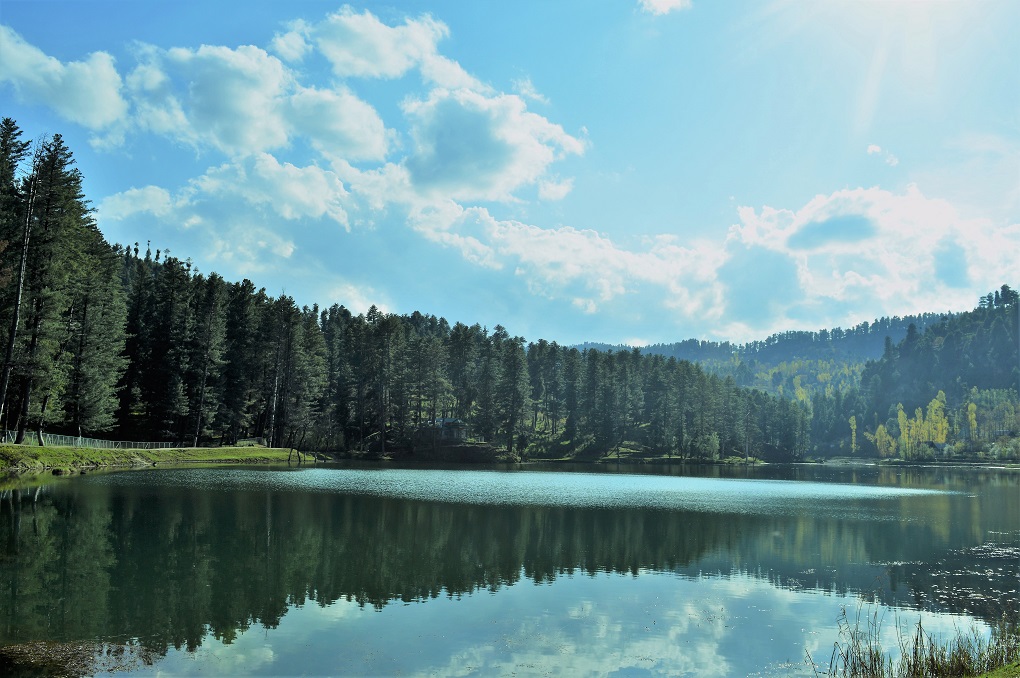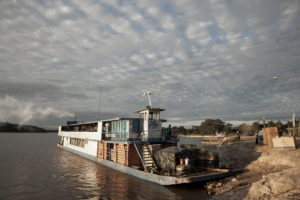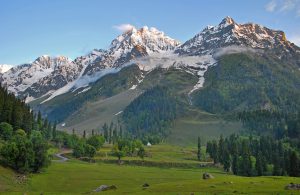The Forest Advisory Committee (FAC) of the erstwhile Indian state of Jammu & Kashmir has been very busy over the last month. Authorized to take decisions on approval of projects passing through forested land in the former north Indian state of Jammu and Kashmir, during the 33 days from September 18, 2019 to October 21, 2019, the FAC approved the diversion of over 727 hectares of forested land. It also approved the felling of at least 1,847 trees (which includes 1471 forest-trees and 376 social forestry trees) as well as the felling of un-enumerated trees coming under the submerged area of a Pakuldul hydro-electricity project and other developmental projects.
Over 60% of the diverted land has been approved for diversion for construction of roads. 33% (243 hectares) of the diverted land has been approved for diversion for the utilisation of army and para-military forces in Pirpanjal (Gulmarg Wildlife Sanctuary), Kehmil, Jhelum Valley, Samba and Jammu Forest divisions, analysis of the official documents revealed.
As many as 198 projects (most of them for road construction) have been approved by FAC in four meetings (on September 18, October 3, October 17, and October 21). In comparison to these 33 days of hectic activity, in all of 2018 only 97 projects involving forest land were cleared. In the meetings between September 18 to October 17 alone, 125 projects were cleared.
Officials in the Jammu & Kashmir’s Forest Department said that all these decisions had to be taken within a few weeks because of the implementation of Jammu & Kashmir Reorganisation Act from October 31, 2019. This Act leads to the scrapping of the Jammu & Kashmir Forest Act (under which FAC was formed) of the former state after the implementation of Reorganisation Act.
Article 370 of the Indian Constitution, in existence for the past seven decades, guaranteed special status to the mountainous state of Jammu and Kashmir whereby it was empowered to constitute its own laws.
However, a member of the former FAC, who requested anonymity, said that many of the approved projects were pending approval for years together. Those questions had not been answered, but the decisions were still being rushed through. “This time around, projects were given clearance in a hasty manner,” he said.
Kashmir’s environmental wealth in jeopady
When Kashmiris talk about the significance of forests, they refer to one of the most popular sayings of 15th century Kashmiri saint and poet, Sheikh ul Alam: “Ann poshi teli yeli wan poshi (food will last as long as forests last).” Kashmir’s evergreen coniferous forests and snow covered peaks have a direct bearing on the region’s agriculture, energy and tourism sectors. Its beautiful lakes, rivers, agricultural plains and meadows owe their existence and economic production to the forests.

The effects of degradation of forests is already visible in drying up of perennial water sources at many places, accelerated soil erosion, flash floods, silting up of reservoirs, loss of biodiversity and reduced forest productivity. The armed conflict has made things even more difficult. Official records at J&K’s forest department reveal that as many as 79 forest officials including one conservator have lost their lives while trying to protect the forest wealth whereas 135 forest buildings have been destroyed. Furthermore forest officials have been attacked by both militants and security forces, officials said.
Quoting statistics from one of his recent studies, Mohammad Sultan Bhat, who heads Kashmir University’s Geography department, said that area under dense forests around the tourist resort of Pahalgam in southern Kashmir fell by 191 square kilometres from 1961 to 2010 with an average annual loss of 3.9 square kilometres, largely due to illegal construction over forested area.
Sparser forest areas, Bhat said, did not fare so badly over the studied period, until recently. “From 2001 to 2010, even they decreased in size by nearly 10% a year,” Bhat said adding “this could be attributed to the fact that the dense forests were initially changed into sparse forests and in the later stage these sparse patches were utilized for agriculture and residential purposes.”
Are Kashmir’s forests recovering?
As per the Forest Survey of India’s (FSI) 2017 Report, forest cover in J&K increased with a net gain of 253 km2 in comparison to the forest cover in 2015 (Forest Report 2015).
But Akhlaq Wani, an Assistant Professor at Division of Natural Resource Management, Faculty of Forestry, in Srinagar’s Sheri Kashmir University of Agricultural Sciences and Technology (SKUAST) says that out of 253 km2 increase in forest area, a significant figure of 245 km2 has come from outside Line of Control (LOC), which divides parts of Kashmir under India’s and Pakistan’s control. Indian officially claims the area and includes it as Indian territory in its maps despite it being under Pakistani administration since 1948.
Therefore there has been a net increase of only 8 km2 of forest cover if figures from Pakistani controlled areas are left out.
Furthermore many of the districts that, according to the FSI Report 2017, were responsible for the increase in forestation – Budgam (61 km2), Baramullah (34 km2) and Pulwama (21 km2) – saw not forest growth, but a shift to horticulture. “If we analyse the historic forest cover of these districts, [they] witnessed deforestation as well as degradation in the past decades [as per published research]. But, at the same time, these regions have witnessed a steep increase in area under horticulture whose area if greater than 1 ha qualifies under forest cover as per FSI (2017),” Wani said.
Under such circumstances, he said, it becomes difficult as to how much of the increased forest cover can be actually attributed to slow growing coniferous forests. And now even those face the chop.
![<p>Part of a degraded forest in north Kashmir’s Bandipora district [image by: Athar Parvaiz]</p>](https://dialogue.earth/content/uploads/2019/12/1576216810_1921-2.jpg)








![A local in the Nubra Valley of Ladakh, looking towards the Korakoram mountain range, which hosts the Siachen Glacier [image by: Athar Parvaiz]](https://dialogue.earth/content/uploads/2019/12/A-local-in-Nobra-Valley-of-Ladakh-looks-towards-the-Korakoram-mountain-range-which-hosts-the-Siachen-Glacier-Photo__Athar-Parvaiz-300x199.jpg)